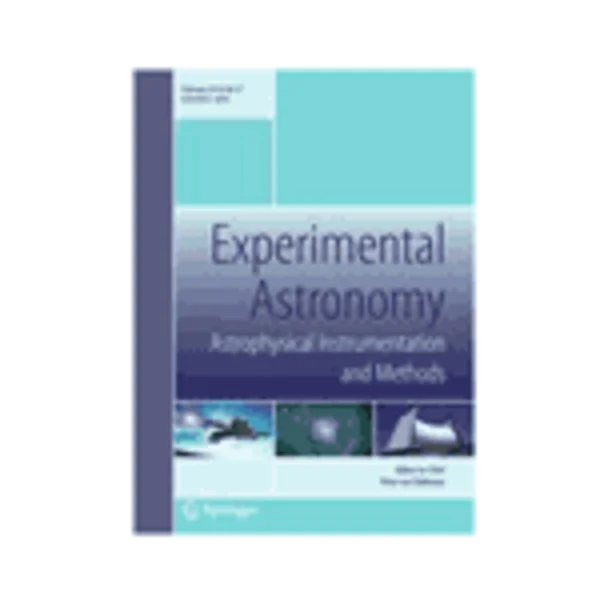-
oss (outer solar system): a fundamental and planetary physics mission to neptune, triton and the kuiper belt
جزئیات بیشتر مقاله- تاریخ ارائه: 1392/07/24
- تاریخ انتشار در تی پی بین: 1392/07/24
- تعداد بازدید: 899
- تعداد پرسش و پاسخ ها: 0
- شماره تماس دبیرخانه رویداد: -
the present oss (outer solar system) mission continues a long and bright tradition by associating the communities of fundamental physics and planetary sciences in a single mission with ambitious goals in both domains. oss is an m-class mission to explore the neptune system almost half a century after the flyby of the voyager 2 spacecraft. several discoveries were made by voyager 2, including the great dark spot (which has now disappeared) and triton’s geysers. voyager 2 revealed the dynamics of neptune’s atmosphere and found four rings and evidence of ring arcs above neptune. benefiting from a greatly improved instrumentation, a mission as oss would result in a striking advance in the study of the farthest planet of the solar system. furthermore, oss would provide a unique opportunity to visit a selected kuiper belt object subsequent to the passage of the neptunian system. oss would help consolidate the hypothesis of the origin of triton as a kuiper belt object captured by neptune, and to improve our knowledge on the formation of the solar system. the oss probe would carry instruments allowing precise tracking of the spacecraft during the cruise. it would facilitate the best possible tests of the laws of gravity in deep space. these objectives are important for fundamental physics, as they test general relativity, our current theoretical description of gravitation, but also for cosmology, astrophysics and planetary science, as general relativity is used as a tool in all these domains. in particular, the models of solar system formation uses general relativity to describe the crucial role of gravity. oss is proposed as an international cooperation between esa and nasa, giving the capability for esa to launch an m-class mission towards the farthest planet of the solar system, and to a kuiper belt object. the proposed mission profile would allow to deliver a 500 kg class spacecraft. the design of the probe is mainly constrained by the deep space gravity test in order to minimize the perturbation of the accelerometer measurement.
مقالات جدیدترین رویدادها
-
استفاده از تحلیل اهمیت-عملکرد در ارائه الگوی مدیریت خلاقیت سازمانی و ارائه راهکار جهت بهبود
-
بررسی تاثیر ارزش وجوه نقد مازاد بر ساختار سرمایه شرکت های پذیرفته شده در بورس اوراق بهادار تهران
-
بررسی تأثیر سطح افشای ریسک بر قرارداد بدهی شرکت های پذیرفته شده در بورس اوراق بهادار تهران
-
بررسی تأثیر رتبه بندی اعتباری مبتنی بر مدل امتیاز بازار نوظهور بر نقد شوندگی سهام با تأکید بر خصوصی سازی شرکت ها
-
تأثیر آمیخته بازاریابی پوشاک ایرانی بر تصویر ذهنی مشتری پوشاک ایرانی (هاکوپیان)
-
ارزیابی نقش دلبستگی به مکان درطراحی سیتی هال اهواز
-
شناسایی آلتراسیون های مرتبط با کانی سازی مس با پردازش داده های ماهواره ای +etm به روش کمترین مربعات رگرسیون شده و کنترل زمینی در جنوب شرق ورقه یکصد هزار کجان، استان اصفهان
-
برداشت بی رویه آبهای زیرزمینی و تاثیر آن بر نشست زمین (مطالعه موردی شهر کرمان)
-
مکان یابی دفع زباله های شهری با استفاده از تحلیل سلسله مراتبی (مطالعه موردی شهر کرمانشاه)
-
stability analysis of multi-directional anchored rock slope subjected to surcharge and seismic loads
مقالات جدیدترین ژورنال ها
-
مدیریت و بررسی افسردگی دانش آموزان دختر مقطع متوسطه دوم در دروان کرونا در شهرستان دزفول
-
مدیریت و بررسی خرد سیاسی در اندیشه ی فردوسی در ادب ایران
-
واکاوی و مدیریت توصیفی قلمدان(جاکلیدی)ضریح در موزه آستان قدس رضوی
-
بررسی تاثیر خلاقیت، دانش و انگیزه کارکنان بر پیشنهادات نوآورانه کارکنان ( مورد مطالعه: هتل های 3 و 4 ستاره استان کرمان)
-
بررسی تاثیر کیفیت سیستم های اطلاعاتی بر تصمیم گیری موفق در شرکتهای تولیدی استان اصفهان (مورد مطالعه: مدیران شرکتهای تولیدی استان اصفهان)
-
بررسی تطبیقی شاهنامه فردوسی و ادیسه هومر از منظر زنانگی و شهر
-
تغییرات بنیادی در آسیب شناسی مبانی ساختارشکنی معماری ایران
-
مبانی و بسترهای تفکر و تعقل خلّاق از دیدگاه اسلام
-
combining sequential and parallel tracking strategies in motion mining: new approach
-
effect of compaction energy on engineering properties of expansive soil




سوال خود را در مورد این مقاله مطرح نمایید :